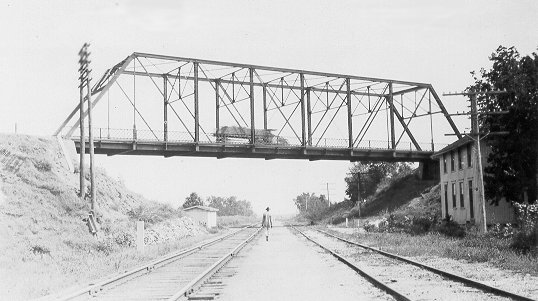|
PARKER PONY TRUSS
1911 Craig 18E0250N4350009 Illinois Steel Br.
1911 Muskogee 51N4120E0910006 Muskogee Iron Works
1914 Muskogee 51N4410E0840003 Vincennes Br.
1935 Kay 36E0230N3180005
Based on evidence available from other states which have completed inventories of their historical bridges, the Parker pony trusses in Oklahoma may constitute an unusual goup of bridges. Once again the design is a result of engineers trying to extend the value of the Pratt configuration. In this case, the Parker curves the top chord of a Pratt, producing a sloping shape that requires less metal and reduces weight of the span. Thus, curving the top chord made the bridge somewhat more economical than its counterpart with a parallel chord (Figure 52). Certainly this concept contributed to making the Parker a popular design for large through trusses. As a pony, however, it seemed to fill the need for spans of 85 to 110 feet and provided greater rigidity because of its riveted connections. Based on its use in Oklahoma, the Parker pony had a relatively brief period of adoption, approximately 1908 to 1915.
Where Parker ponies are documented--and the surviving sample is small (6)--they did not come from major builders. The Vincennes Bridge Company if Indiana enjoyed its greatest success around Muskogee, and an 88-foot Parker pony at Fort Gibson provides an excellent example of this company's work. However, the Illinois Steel Bridge Company of Jacksonville, Illinois, whose Parker span crosses a creek near Vinita, played only a small role in state bridge building. A Parker pony identified as built by the Muskogee Iron Works may in fact have been a Vincennes' bridge erected by the local firm, since it is virtually identical to the span by the Indiana company. In all cases, the Parker ponies performed a mundane task in carrying country roads over minor waterways.

Figure 52. The Pratt pattern in the web members along with the curved top chord of this bridge identifies it as a Parker pony truss. The Parker design was ordinarily utilized in much larger through truss bridges. Bridge 36E0230N3180005 crosses a creek near Tonkawa in Kay County.
|



